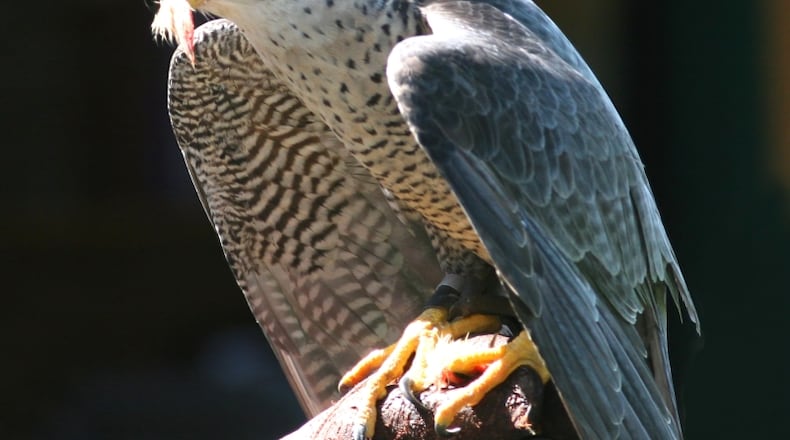Anyone with only a passing interest in sports knows that the Atlanta Falcons play football and the Atlanta Hawks play basketball.
Many folks, though, can’t distinguish the difference between real hawks and falcons. Georgia is home — at least part of the year — to six hawk species and three falcon species. They’re all raptors, but determining if an individual bird is a falcon or a hawk is a common identification problem.
Generally, falcons are smaller than hawks. Hawks have rounded wings and broad tails; falcons have long, pointed wings and narrow tails. Hawks tend to glide or hover while hunting; falcons use rapid, powerful wing beats and high-speed dives. Falcons have a sharp tooth — the “tomial tooth” — on their beak to sever their prey’s spine; hawks use their talons to kill prey.
Georgia’s hawk species include red-shouldered, red-tailed, broad-winged, Cooper’s and sharp-shinned hawks. A sixth hawk species, the Northern harrier, is a winter-only resident that is arriving now from summer nesting grounds up north. The harrier may be the easiest hawk to identify because it flies so close to the ground for prey.
The other five species also may be more common in winter because many of the northern-nesting birds migrate to Georgia for the season and mix with year-round residents. Broad-winged hawks, on the other hand, are less abundant during winter because most of them fly to Latin America for the season.
Georgia’s falcon species are the peregrine falcon, American kestrel and merlin. They are most common in the state during fall and winter. The falcons — and hawks as well — may be spied now migrating through the state. (The Southeastern kestrel, a subspecies of the American kestrel, is a permanent resident in Georgia.)
Bird Watchers Digest magazine says “the largest numbers (of migrating raptors) are along the coast, where from the second half of September into October a bird watcher can see several hawk species and all three Georgia falcons in one day.”
Other good places to see migrating hawks are from high places in northwest Georgia.
IN THE SKY: From David Dundee, Tellus Science Museum astronomer: The moon will be first quarter on Thursday. Venus is low in the west at dusk. Rising in the east are Mars (just before midnight), Jupiter and Saturn (just after dark).
Charles Seabrook can be reached at charles.seabrook@yahoo.com.
About the Author
Keep Reading
The Latest
Featured


